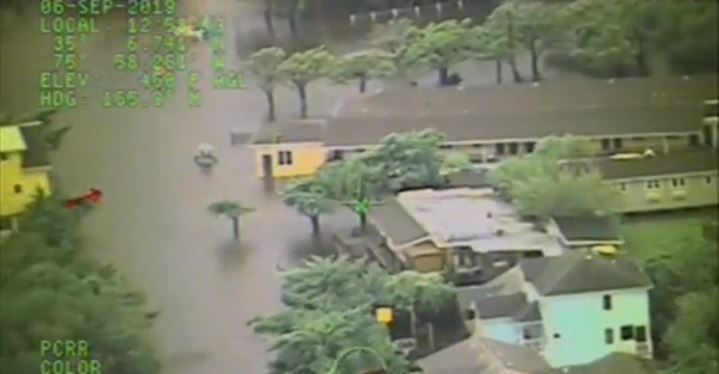Almost a year to the date after Hurricane Florence wreaked havoc in North Carolina’s fishing communities, Hurricane Dorian started its march toward the same target.
The week-long trek up the Southeast coastline had North Carolina’s fishermen pulling boats and removing gear from the waters. For most the effort paid off, with the aftermath proving to be little more than a cleanup and of course, precious time lost on the water.
Some were not as fortunate. Ocracoke Island, a barrier island on North Carolina’s Outer Banks near where Dorian made landfall Sept. 6, took the brunt and experienced catastrophic flooding with widespread destruction of property.
About 800 people, many commercial fishing families, rode out the storm on Ocracoke. Boats were lost, homes flooded, fish houses and waterfront restaurants destroyed.

North Carolina National Guard soldiers helped Ocracoke Island residents dealing with the aftermath of Hurricane Dorian's Sept. 6 landfall there. NCNG photo/SSgt. Leticia Samuels.
Dorian's utter devastation of the northern Bahamas may have taken several thousand lives according to some estimates there, as responders turned to the grim task of recovering bodies. With low pressure reported at 913 millibars, Dorian was likely the most powerful hurricane in the region since the 1935 Labor Day hurricane that ravaged the Florida Keys.
Moving northward, Dorian threatened a repeat of Hurricane Hugo that destroyed McClellanville, S.C., in 1988, or at least that of Hurricane Matthew in 2016 that took a toll on the Carolinas fishing fleet.
Instead Dorian made one last landfall on the southern Outer Banks. On Ocracoke, which is accessible only by boat or by air even in normal weather, people climbed into their attics to flee from high rushing water.
The storm surge on Ocracoke rose 5 to 7 feet in an hour and a half, according to Katie Webster, a meteorologist with the state.
According to North Carolina Gov. Roy Cooper, “the storm surge inundated the island.”
Earlier in the week, Cooper declared a state of emergency for all 100 counties in North Carolina and urged North Carolinians to prepare for the storm, especially residents of the Outer Banks. In conjunction, the North Carolina Division of Marine Fisheries requested that fishermen “remove all gear from the water prior to Dorian’s arrival, especially crab pots and gillnets prone to damage and displacement during storms.”
“Ocracoke remains a focus for emergency managers, National Guard soldiers, doctors, nurses, volunteer groups,” the governor’s office says.
About 100 National Guard members, along with emergency manager and a medical team, are staying on Ocracoke to help with recovery on the island, reports the governor’s office.
“Recovery efforts will continue so our coastal communities can recover as quickly as possible,” Cooper said in a press release. “Not every area evacuated is safe to return to just yet. Those eager to return to the islands should follow the re-entry instructions issued by local governments.”
A Cape Hatteras tide station in Pamlico Sound reached the second highest level on record during Dorian, trailing only the high water mark set by Hurricane Matthew in 2016, according to a tweet posted by the National Oceanic and Atmospheric Administration.
Meanwhile the state’s commercial fishing communities are organizing a number of fund raisers to benefit Ocracoke fishing families and help a recovery which undoubtedly years away.







